October 14, 1888
October 14, 1888, stands as a day of momentous importance in film history. It could be called the birthday of the motion picture itself. On that day, the earliest celluloid film, The Roundhay Garden Scene, was shot in England. In America, another birth was taking place. It was the birth of an individual who, over forty years later, would become one of the most influential men in the largest development of the motion picture technology, the film industry in Hollywood, California. This man was Joseph I. Breen, the head of the Production Code Administration, and the man who worked on more motion pictures than anyone else in film history. This article is dedicated to the birth and influence of the film and the man born on this day, both of which were pioneers in the motion picture field.

This article is one of my contributions to our blogathon, The Second Annual Great Breening Blogathon, which we are hosting on October 12-31 in honor of Joseph I. Breen’s birthday. This article, which is in the Clean with Breen category of our blogathon, is one of my tributes to Joseph I. Breen in honor of his 130th birthday.

This article is also my contribution to another blogathon, The October Birthdayz Blogathon is being hosted by No Nonsense with Nuwan Sen on October 20-22. This blogathon is dedicated to the host’s sister, who was born in October. This blogathon is an opportunity for film-lovers to write about their favorite movie people born in October. What day in this month would be better to discuss than October 14, the birthday of the motion picture and its greatest contributor?

The Roundhay Garden Scene was filmed at Oakwood Grange in Roundhay, Leeds, West Riding of Yorkshire, England. Oakwood Grange was the home of Joseph and Sarah Whitley. Considered to be the oldest existing celluloid film, the scene was filmed by Louis Aime Augustin Le Prince. Monsieur Le Prince was a brilliant French inventor who had been experimenting with different lenses and projection systems for years. He invented and patented a single-lens camera in 1888. The Roundhay Garden Scene is believed to be the first film which he made with that camera.

You can watch the scene here on YouTube. The film is under two seconds in length, and it contains twenty-four frames. Four people can be seen in the brief footage from the garden. The young man in the front wearing a black suit is Adolphe Le Prince, Louis Le Prince’s son. He clearly walks from left to right of the picture. The lady in the black dress is Sarah Whitley, Louis Le Prince’s mother-in-law and one of the owners of the garden. She died ten days later and is potentially the earliest-born person to appear in a motion picture. The gentleman in the light overcoat and hat is Joseph Whitley, Louis Le Prince’s father-in-law and the other owner of the garden. The other lady in the film, who is wearing a light dress and a large hat, is said to be a friend named Anne or Annie Hartley, although some have said that her name was Harriet Hartley.

This film is short, but the technology is amazing. 130 years ago, Louis Le Prince was genius enough to invent the technology of the motion picture, on which all filmography has been based. Many people have used the comments section at YouTube to joke about the age, brevity, and simplicity of this film. However, it was the beginning of a science which has bloomed into the huge entertainment industry we call Hollywood. Anyone who enjoys motion pictures should appreciate this first step as a historical landmark and a look at life in 1888. We are very fortunate that it is still in existence for us to enjoy and study!
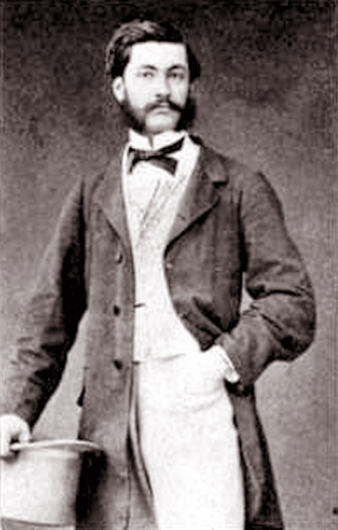
Because of his huge contribution to the motion picture industry, Louis Le Prince should be recognized as the Father of Cinematography. However, unlucky circumstances prevented him from officially getting widespread recognition. In September of 1890, Monsieur Le Prince was preparing for an American tour to exhibit his camera and projector. He had taken out dual French and American citizenship as he planned to relocate his family to the United States. At that time, he was about to patent his 1889 projector in the United Kingdom. However, he wanted to visit his family in France before leaving. In mid-September, he visited his brother in Dijon. On September 16, he boarded the train to Paris. However, he was not on the train when it arrived in Paris. He was never seen again, and neither his body nor his luggage was ever found. To this day, his disappearance remains a mystery. Although it was never proved, his widow believed that he was assassinated. The Le Prince family suspected the Thomas Edison or someone near him ordered Louis Le Prince’s death to secure Mr. Edison’s position as the inventor of the motion picture. Although Thomas Edison and the man he employed to make the motion picture, William Kennedy Dickson, were pioneers of cinematography, their work succeeded Monsieur Le Prince’s.
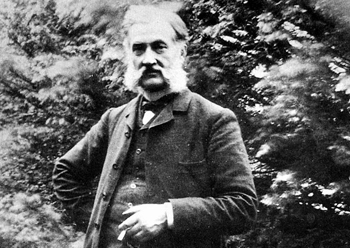
Because of Louis Le Prince’s tragic disappearance eleven months after the filming of The Roundhay Garden Scene, he was unable to exhibit his amazing invention, and others claimed the credit for the invention. In recent years, information about him has increased. He has now gained some recognition for his huge contributions to the motion picture field. However, he still does not have the acclaim that he deserves.
On the same day The Roundhay Garden Scene was being filmed by the ill-fated Louis Le Prince, an Irish immigrant and his wife welcomed their eighth and last child into the world. On October 14, 1888, Joseph Ignatius Breen was born in Philadelphia, Pennsylvania. His father was Hugh A. Breen, who was born in 1847 in Ireland. He had immigrated to the United States in 1868 at the age of twenty-eight. Ten years later, he married Mary Ann Cunningham. Mary was born in Philadelphia in March of 1852 to Irish immigrants. She was twenty-six when she married Hugh Breen. Mr. Breen was forty-one when Joseph, their sixth son, was born. His wife was thirty-six.
Joseph Breen was raised in a devout Catholic home. He went to the Gesu Parish School through the eighth grade, after which he went to the Roman Catholic High School for Boys. He was a star basketball player in high school and class president his senior year. Like his brothers, he went to St. Joseph’s University when the time came. Unlike his brothers, he dropped out after two years. He was eager to find his own way, and he became a newspaperman with a Philadelphia paper. For the rest of his life, he claimed to be a college graduate.
In February of 1914, Joe Breen married Mary Rose Dervin, a Philadelphian of Irish descent who was born in 1894. They had six children during the next ten years and raised them in a strong, moral home. During those ten years, the family didn’t stay in one place very long. Mr. Breen’s diverse jobs as newspaperman, public relations man, and diplomat brought them to Jamaica, Canada, New York City, Washington D. C. , and finally Chicago.
It was in Chicago in 1926 that Joseph Breen had his first interaction with the motion picture industry. Still a devoted Catholic in adulthood, he worked for various Catholic organizations and was friends with many clergymen. He worked as personal secretary for Cardinal George Mundelein of Chicago in the 1920s. In this job, he was very instrumental in the arrangement of the 28th International Eucharist Congress, a huge gathering of Catholics that took place in Chicago in 1926. After working on the publicity before the event, Mr. Breen was involved with the making of a documentary about it. Fox Film Corporation and Martin J. Quigley, the publisher of a major film trade publication and one of Mr. Breen’s employers, made the dignified documentary. It was Joe Breen’s job to book and promote it throughout the country. It was an exhausting experience, after which he said that he never wanted to market a movie again.
He was destined to grow closer and closer to the film industry, however, as the years passed. In 1929, he was present at the meeting when Martin J. Quigley first mentioned his idea for the Motion Picture Production Code. Two years later, he was hired by Will Hays to go to Hollywood as the public relations man for the Motion Picture Producers and Distributors of America (MPPDA). Mr. Hays knew him through their mutual business associate, Martin Quigley. He had also observed Mr. Breen’s amazing public relations skills when the latter ended coal miner strikes at the Peabody Coal Company, which Mr. Hays’s law firm represented. This lucky connection brought the Breen family to warm but wicked Hollywood, where Mr. Breen was paid to defend scandalous pre-Code films and the inept Studio Relations Committee (SRC), which was supposed to be enforcing the Code.
During these arduous years in Hollywood, Joseph Breen was unable to improve the moral tone of films. However, he learned a lot about the film industry, and he made many important friends. As his ability to improve films’ content became well-known, he was often called in by the flailing SRC to work on difficult pictures and help them avoid censorship. In January of 1934, he officially became the head of the SRC, a position which he had unofficially filled for a month. Although he couldn’t demand that films comply with Code standards, he had personal strength, charm, and persuasion which made people respect him. Thus, the moral tone of many films began to improve.
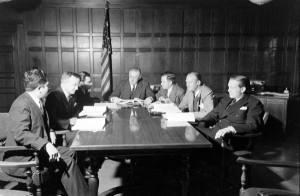
Joseph Breen’s true place in the film industry was created in July of 1934. When an amendment was added to the Code, a clause was created which made a Seal of Approval from the newly-formed Production Code Administration (PCA) necessary for any film’s release. Joe Breen was appointed as head of the PCA, and his job was to enforce the Code. He self-regulated every film that was made in America with his staff of seven co-workers plus secretaries. He worked tirelessly to make sure that every film was decent from first story outline to final, sealed cut of the film. He worked from 1934 to 1954, when he retired because of poor health.

From its formation until Mr. Breen’s retirement, the PCA issued over 17,000 Seals of Approval. Mr. Breen personally worked on as many of these films as he possibly could. Even when he assigned other PCA members to films, he would often look at them himself when a difficulty arose. His only intermission from the PCA during this time was a year of absence in 1941-1942 when he was the head of RKO Radio Pictures. The PCA issued an average of 1000 Seals per year during that time. Because of that, you could subtract 1000 films from the number of films on which he worked. To be accurate, another 1000 should be subtracted for vacation time and the number of films which he relegated to others. That leaves 15,000 films on which he probably personally worked.
Having worked on 15,000 films, that makes him the filmmaker with the greatest output in the history of the film industry! He personally added lines, concepts, and scenarios to every film which passed through his office. Even the most active crewmembers of the studios in the Golden Era worked for only one studio. Obviously, Mr. Breen worked on more films because the PCA had to carefully self-regulate every film from every studio. Upon thinking about it, I reflect on the fact that Mr. Breen saw more films from the greatest era of Hollywood than anyone else possibly could have. However, what is more important is that he saw the progression and transformation of all those films. He saw them change from tawdry books, racy plays, and risqué scripts to developed, moral, and thoroughly entertaining films. That’s quite a job.
When he retired in 1954, Joseph Breen was presented with an honorary Academy Award for his dedicated and untiring service to the film industry during his long, arduous years at the PCA. He was the longest serving head of the PCA, leading it during its best days. He is also the only employee in the history of the MPPDA, now the MPAA, to receive an Academy Award for his work. To me, that shows that the industry viewed him not as a censor or an outsider but as a filmmaker. Many moderns assert that he was no filmmaker. Apparently the industry with which he worked felt differently about the matter. They inscribed the Oscar with the kind and surprisingly heartfelt dedication, “To our industry’s benevolent conscience.” That shows that, despite the fighting, struggling, and compromises which every filmmaker had experienced with him, the industry knew that Joe Breen had only been helping them. He always had their best interest at heart. The inclusion of the word benevolent shows that he was more than a policeman to them. He wanted them to make a clean, entertaining product which would be above reproach, would avoid censorship, and would make money for them while entertaining and uplifting the public. They knew that he was a friend who wanted to improve movies, not censor or control them. Tragically, the industry promptly forgot Mr. Breen and his ideals as soon as he retired a few months after the awards ceremony. The industry just couldn’t maintain the Code without its benevolent conscience. Despite this, the Oscar itself meant a lot to Mr. Breen. His grandson, Jack Benton, remembers that the Oscar was proudly displayed on Joe Breen’s mantle for the rest of his life.
Many people might miss the amazing coincidence between the mutual date of Mr. Breen’s birth and the filming of The Roundhay Garden Scene because Joseph Breen’s birthday is often listed as October 14, 1890. The error was started by the gentleman himself, since he listed his birth as two years earlier when he moved to Hollywood. This was merely complying with local custom, although it seems unnecessary for someone who was not an actor! It is now known that he was in fact born in 1888 on the very day that Louis Le Prince’s two-second film was made.
What an amazing coincidence! I think it is astounding that the oldest motion picture and the man who contributed to the most motion pictures were born on the same day of the same year! It just shows that Joseph Breen’s destiny was to be in the film industry. It took over forty years for him to take his place in Hollywood. However, once he did, he left a bigger impact on motion pictures than any other one individual. Even though his name is not well-known, his influence will never be lost or forgotten.
This article is respectfully and admiringly dedicated to two unappreciated, unacknowledged geniuses of the motion picture field. It is dually dedicated to Louis Le Prince, the Father of Cinematography, and Joseph I. Breen, the Industry’s Benevolent Conscience. Without Monsieur Le Prince, motion pictures wouldn’t have had their strong basis of early technology. Without Mr. Breen, motion pictures never would have achieved a standard of decency and a unique quality of being moral and exciting at the same time; there may never have even been such a thing as a family film.
The next time you watch a film, remember Louis Le Prince, the unpraised inventor of the motion picture. Without his hard work and ingenuity to create The Roundhay Garden Scene and other early shorts, we wouldn’t have the movies we now watch and love. We must never forget the inventors and pioneers of the motion picture field. While you are thinking about Monsieur Le Prince, remember Joseph Breen, as well, especially if you are watching a classic film. He was responsible for the moral tone of American films made during 1934-1954. If you enjoy anything about movies from this time, you have to give some credit to Mr. Breen. Even if you don’t like the Code or its concepts, you must acknowledge the fact that he helped to make movies what they were. If you watch a modern film and wonder why it can’t be the way movies used to be, think about Mr. Breen. It was his influence which made them what they were.
Here’s to the motion picture and two great gentlemen behind it! Here’s to Louis Le Prince, the man who invented it, and Joseph Breen, the man who perfected it.
Join The Second Annual Great Breening Blogathon!
Join The Claude Rains Blogathon!
Click on the above image to purchase Thomas Doherty’s biography of Joseph I. Breen, Hollywood’s Censor.


Click on the above image to purchase Christopher Rawlence’s biography of Louis Le Prince, The Missing Reel.
Follow us to bring back the Code and save the arts in America!
We are lifting our voices in classical song to help the sun rise on a new day of pure entertainment!
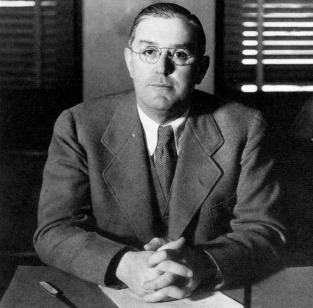

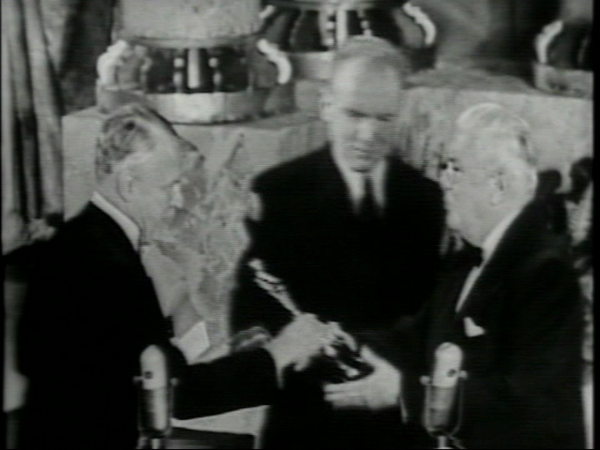




I’m a bit embarrassed to say I hadn’t heard of Louis Le Prince until very recently, and I didn’t know about his disappearance until I read your post today. He does deserve more recognition for his work. It sounds like his life would make for an interesting movie in itself.
Your article is really interesting (as always). It’s staggering to think about the number of films Joseph Breen watched, never mind personally worked on – as you pointed out. For him to be so influential in a place like Hollywood means he would have to be smart, savvy and charming – as you’ve also pointed out.
Thanks, as always, for sharing your research with us. 🙂
LikeLiked by 1 person
Dear Ruth,
Thank you for liking this article and leaving a comment! I really appreciate your kind remarks. I’m glad that you enjoyed learning more about Louis Le Prince’s fascinating story. It would have made a great movie! Thank you for your kind comments about Mr. Breen. It means a lot to me that you agree with my opinions about Mr. Breen. I really appreciate the support of faithful readers like you!
Yours Hopefully,
Tiffany Brannan
LikeLike
Pingback: The ❝October Birthdayz❞ Blogathon (Day 3) | No Nonsense with Nuwan Sen
“Mr. Breen saw more films from the greatest era of Hollywood than anyone else possibly could have.”, that’s so true, and that too on the Big Screen (so much better than watching films on a Laptop, and I can’t think of what it might be like to watch movies on a smartphone).
What a masterpiece of an essay, this is Tiffany. Brilliant tribute to Roundhay Garden Scene, the (till date) unsolved mysterious disappearance of Louis Le Prince and of course Mr. Joseph Breen’s contributions to the Golden Age of Hollywood. They sure don’t films like they use to.
Of course, I don’t accept every thing to do with code, like for instance stuff like ‘if two people are seated on the bed, one leg should touch the ground’ (which makes no sense to me); at the same time I hate how people make such ridiculously cheap movies today showcasing defecation, puking and passing out excess gas and think it’s funny. It’s stale, dirty and cheap. Or the overt use of foul language and extreme violence (kids shouldn’t be allowed to play such video games, just imagine their mentality, if they enjoy seeing people get killed).
Of course, sex and nudity, if aesthetically handled by a sophisticated director, it’s a work of art; so long as it doesn’t cross the line and end up being pornographic. And I hate the way, CGI dominate a lot of movies today.
Thanks a ton!!
LikeLiked by 2 people
Thank you so much for including my article in Day 3’s roster! I appreciate your kind, thoughtful, and complimentary comments about my writing. I really enjoyed writing this article. I especially enjoyed learning about Louis Le Prince, his camera, and his disappearance. I love learning about unappreciated geniuses from the past, and I have now added Monsieur Le Prince to my list! I’m glad that you agree with me and the Code on several points.
One comment you made inspired me to write another article. When I finish it, I’ll send you the link! I’ll probably include it in the “Second Annual Great Breening Blogathong.” I think you will enjoy reading it.
Yours Hopefully,
Tiffany Brannan
LikeLiked by 1 person
I feel honoured. Thanks Tiffany, and yes, please do send me the link
Kind Regards
Nuwan
LikeLiked by 1 person